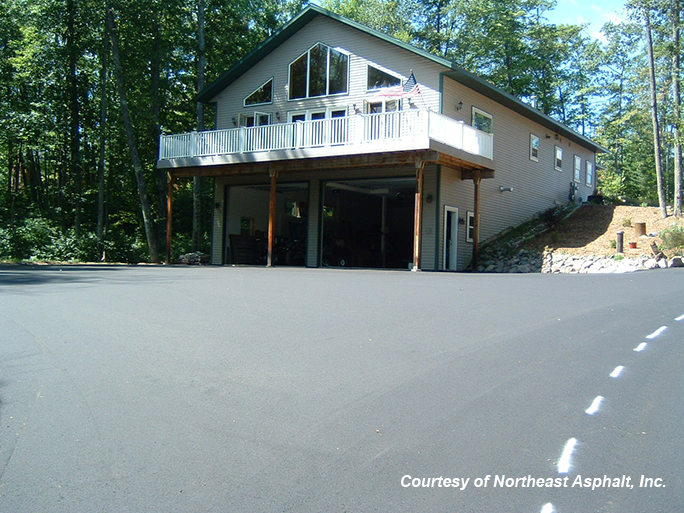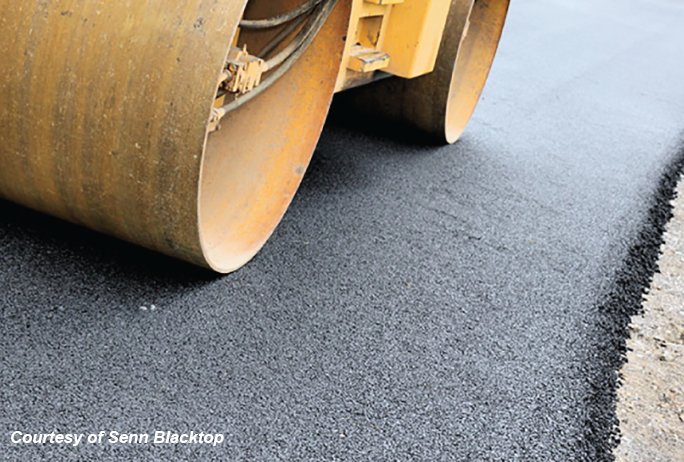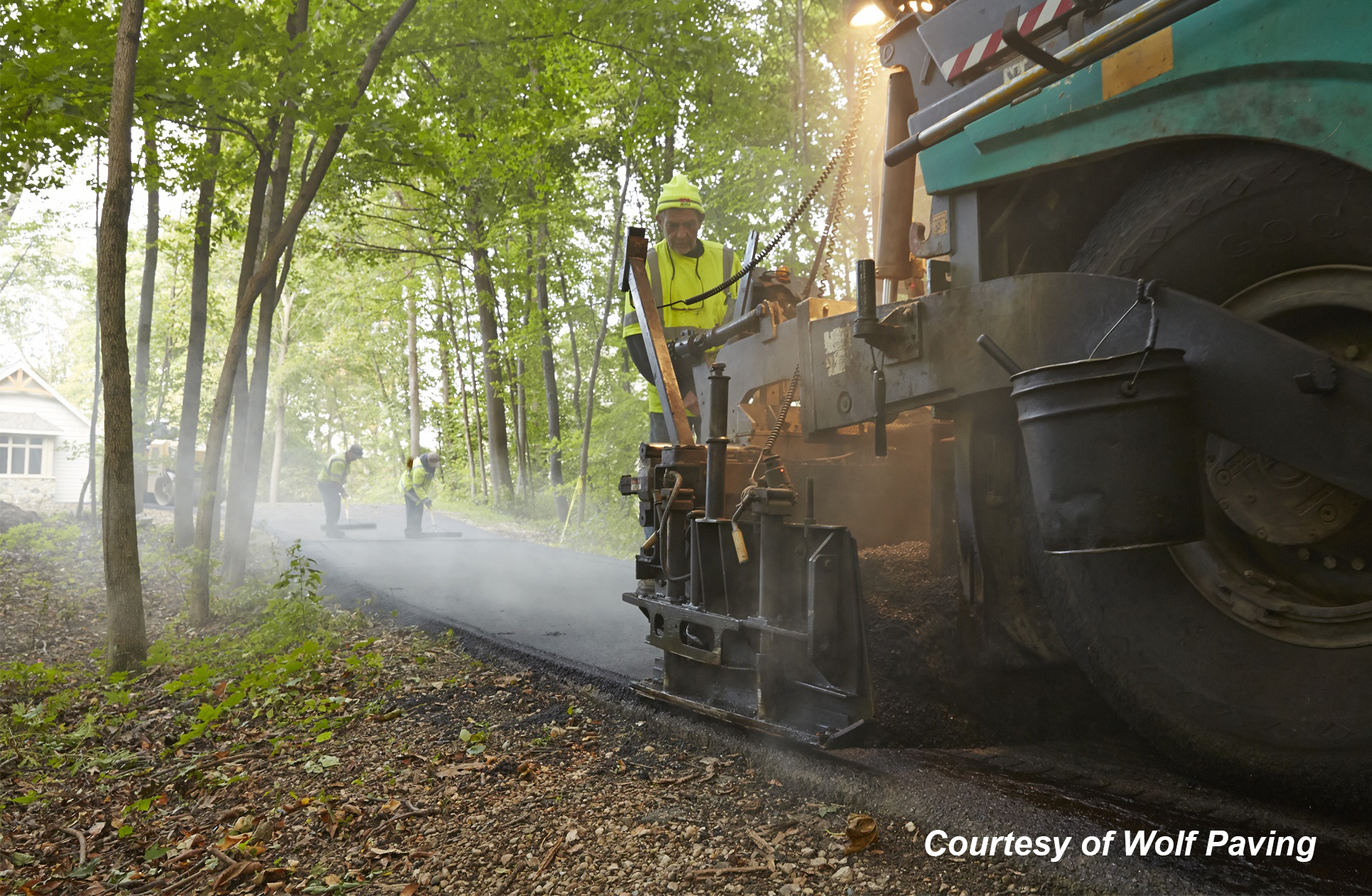
Dear Homeowner,
A well-designed, well-built, and well-maintained driveway made from asphalt (sometimes called blacktop) adds value to your home. It is economical, durable, long-lasting, and easy to maintain.
So when it comes to your driveway, how do you get the perfect asphalt pavement for your home, and how do you take care of it?
This guide provides simple steps you can take to make sure your driveway is built properly and provides worry-free performance year after year.

 A properly designed asphalt driveway will give you virtually trouble-free service for up to 20 years. Here’s how it’s done:
A properly designed asphalt driveway will give you virtually trouble-free service for up to 20 years. Here’s how it’s done:
- Start with a solid base. The subgrade (the ground on which the driveway is placed) is critical to your driveway’s success. It must be smooth, firm, even and contoured to match the layout of the driveway. It should be free of organic material and topsoil.
- Add the right surface. There is a wide range of hot mix asphalt mixtures with different properties to meet specific conditions. A good contractor will design a pavement appropriate for local conditions and projected vehicle loadings. The design includes proper pavement thickness and compaction for a quality final product.
Hot mix asphalt is commonly referred to as a flexible pavement. In our climate, having a driveway made of asphalt pavement has many advantages and benefits. Understanding asphalt pavement will help prepare you to take care of your driveway.

- All asphalt mixtures contain a flexible asphalt cement, and that allows your driveway to remain pliable, softening and hardening as temperatures rise and fall. The asphalt will stiffen over time, yet remain somewhat flexible throughout the life of the pavement.
- Early in the pavement life, in extreme weather conditions, or in the spring during the freeze-thaw cycle when the pavement is most susceptible, concerns may develop. Motorists turning their steering wheels when not in motion could scuff the pavement surface, especially front-wheel drive vehicles or those with low profile tires. Most markings will disappear in time and are not a sign of concern related to workmanship or materials.


- If the driveway was not designed for heavy traffic, minimize or restrict access of very heavy loads.
- Distribute the weight of static loads as well. You can do this by using plywood, jack stands, tongue jacks, and car ramps.
- Prevent leaks as much as possible, as fluids dripping from vehicles (gasoline, anti-freeze, lube oil, grease, roads salt, power steering or transmission fluid, etc.) can break down the asphalt cement and lead to deterioration. Clean up when spills occur using soap and water, absorbent powder, or even kitty litter.
- Keep vehicles away from the edges of the driveway if the edges are not supported.
- Keep the edges of the driveway supported using stone, gravel, topsoil, or grass.
- If a crack develops over time due to expansion and contraction, fill with crack filler in the spring to keep water out of the underlying layers.
- The timely and proper use of driveway sealants can help protect a driveway from vehicle fluids, pavement aging, and deterioration. Refer to the Get Assistance section below to find additional details.

- It is vital that water drains off your driveway and away from your home. Every effort is made during construction to avoid low spots in the pavement. If you notice standing water or drainage concerns, contact your asphalt professional for remedial options.
- As the pavement ages, isolated failures may occur. Contact a professional for repairs to ensure pavement longevity.
- Contact a reputable pavement maintenance contractor for recommended treatment and appropriate timing of initial sealant application. Keep in mind that once applied, periodic reapplication of the sealant is necessary.
- Visit the WAPA website at www.wispave.org to find a list of WAPA laydown contractors and hot mix asphalt producers.



